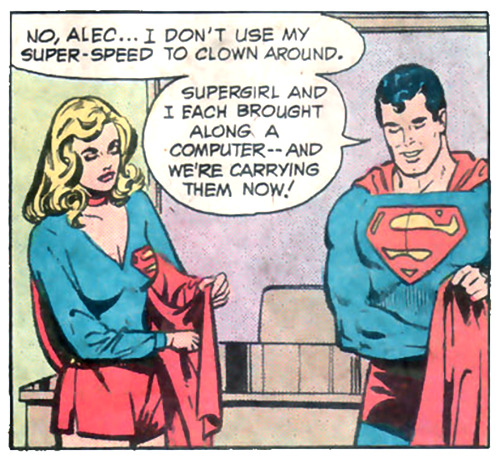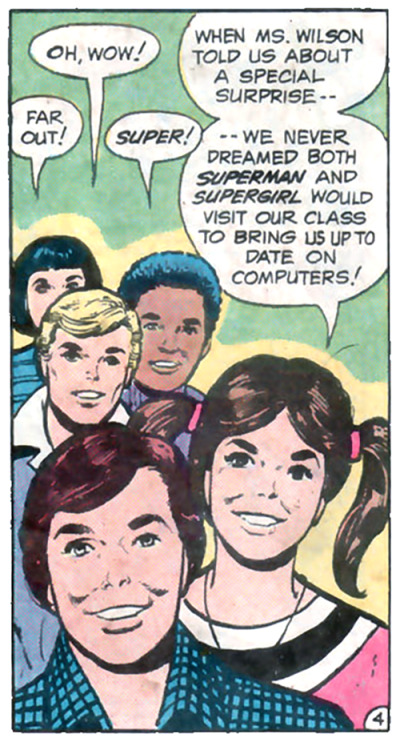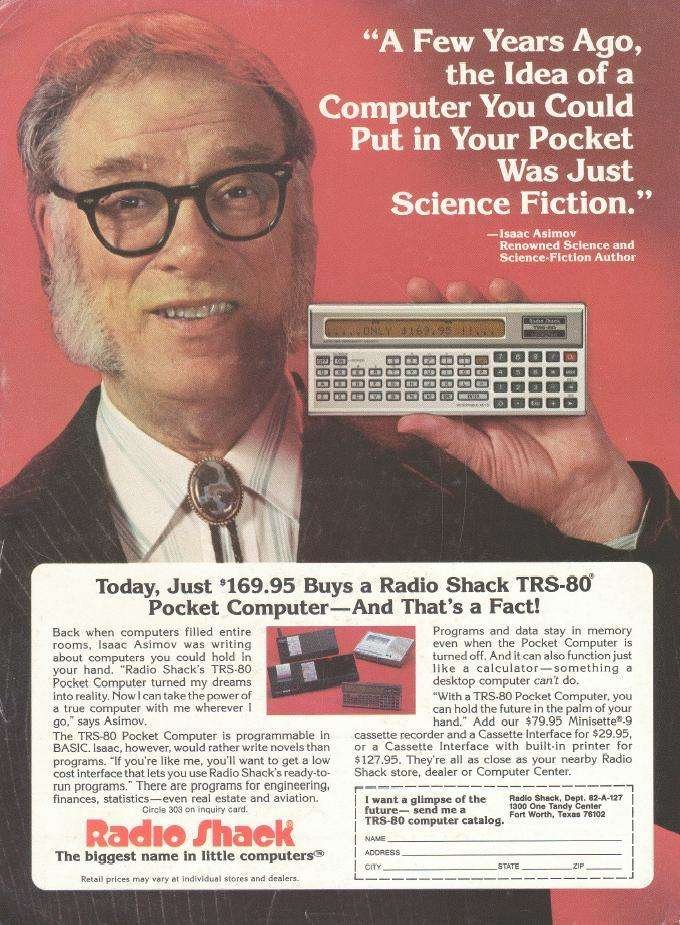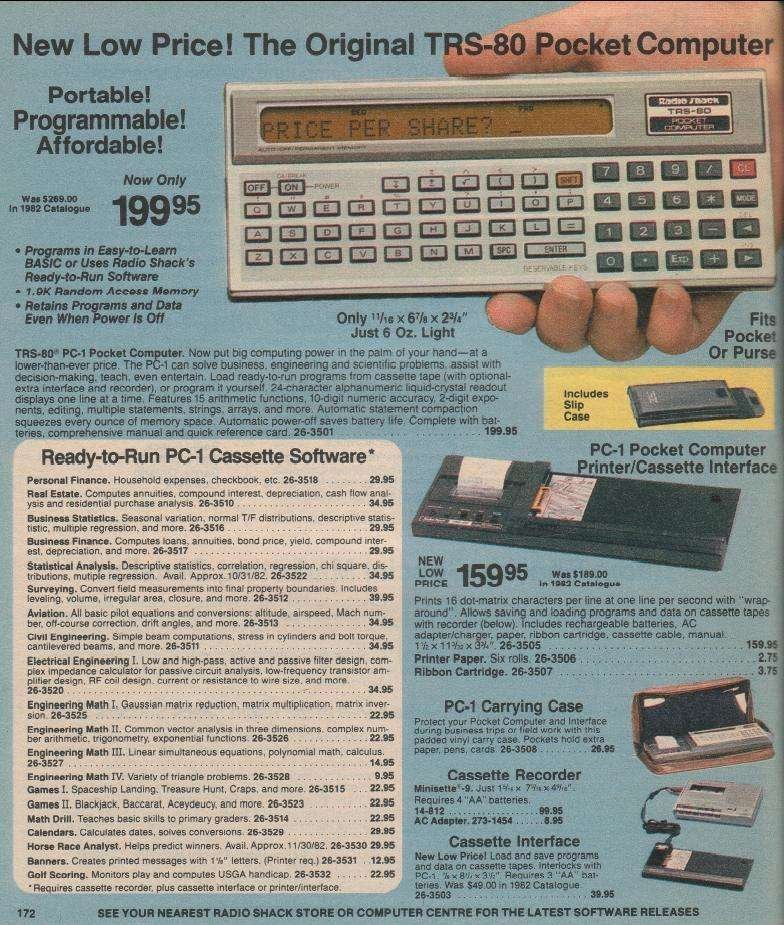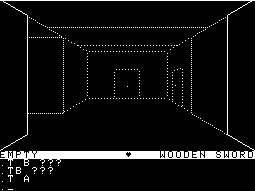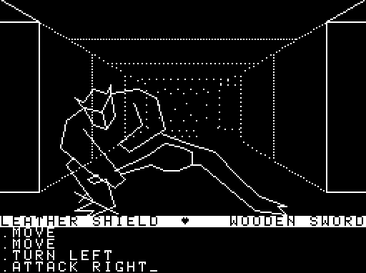Also known as the Tandy Pocket Computer, this was really a line of devices that were rebadged Casio or Sharp models. Over the years, there were eight different models. The original model, later called the “PC-1”, was a rebadged Sharp PC-1211. These were in no way compatible with any of the TRS-80 computers. Tandy/Radio Shack just really liked that name.
These so-called “pocket computers” were really early programmable calculators. However, you could program them in BASIC and depending on the model you could interface them with a printer and cassette device for storage. The original included a 24 digit dot matrix LCD, full QWERTY keyboard, and taped drive / printer connector. It ran on four button cell batteries which could last more than 200 hours. They used a 4-bit Sharp SC43177/SC43178 CPU running at a whopping 256khz (that’s kilohertz, not megahertz) and included an equally impressive 1.5k of RAM.
This thing was not cheap. The unit alone cost $249.95 when it was introduced in 1980. The printer would run you another $159 and the cassette drive was $99 and this was later after the price of the pocket computer itself had dropped to $199. There was also various software you could buy on cassette from Radio Shack ranging from $10 to $40. Later models would include improvements like expandable memory.
Here’s the product descriptions by Radio Shack for the Pocket Computer, various accessories and software:
Another Computer Breakthrough from Radio Shack Radio Shack puts big computing power in the palm of your hand with the amazing new TRS-80 Pocket Computer, the first complete, portable computing system you can program in BASIC. The Pocket Computer can solve problems, process data, assist with decision-making, teach, and even entertain – at a low price that seems all the more incredible once you’ve explored its exiting featuresYou Don’t Have to be an Expert
If you’ve never operated a computer, don’t worry, because calculations on this “pocketable” TRS-80 are as simple as using a calculator – or you can use our cassette software that’s ready to run. The Pocket Computer had built-in arithmetic functions you can put to work immediately, simply by pressing the ON key. You can work with large numbers – up to 10 digits (mantissa) and 2-digit exponents. And using trig and angular functions is just as easy because they are also built in.
The real power of the TRS-80 Pocket Computer comes from its ability to run programs, either yours or ours. It accepts your instructions on “how to do the job” in BASIC – an English-based computer language used by experts and beginners alike for a wide range of jobs. In fact, Pocket Computer BASIC is very similar to TRS-80 Level 1 BASIC, with the addition of 15 arithmetic functions.
You can program the Pocket Computer to do almost any of the smaller jobs that the TRS-80 microcomputer can do, except those requiring graphics capability. Program it to file a stock portfolio or to calculate business, engineering or scientific problems. Programs can be saved on cassettes (with the optional cassette interface and recorder), or left in memory for as long as needed.
Each program in memory can be identified with a single key label and run simply by pressing the specified key. Programs can accept words and names as data (strings of up to 7 characters) for storage in memory, and even sort or search for them. The 1424 step memory is automatically partitioned for program and data storage, and there is a 26 data element memory and a 48-step reservable memory for storing frequently used functions.
You simply switch to the RUN mode to run your program or programs from memory – several can be stored at the same time. Your programs can display prompts in plain English for inputs and display answers with explanations.
Both an Edit and Debug mode are provided so the TRS-80 Pocket Computer is much easier to program and use than any programmable calculators. If you own a programmable calculator compare it to our Pocket Computer. You may never use your calculator again!
The keyboard arrangement includes 37 keys for alphabetic input and special functions, most having a dual function when used with the Shift key plus a 20-key section for numeric input, numeric functions mode and editing. The big 24-character alphanumeric LCD has easily readable 3/8″ high characters plus eight smaller mode indicators.
For scientific and engineering uses the Pocket Computer is accurate to 10 digits and can handle numbers with exponents of 10 to the 99th power to 10 to the -99th power. Built-in arithmetic functions include trigonometric and inverse trig with readout in degrees, radians or gradians, log, exponent, square root, angular conversions, integers and absolute values.
Power for your TRS-80 Pocket comes from 4 easy-to-replace long-life mercury batteries (available at Radio Shack). An automatic power-off feature saves battery life if no entry is made after 7 minutes. Programs and data are saved in permanent memory for instant recall.
The optional cassette interface holds the Pocket Computer and allows you to store or enter multiple programs and data. There are already eight Radio Shack program packages available and many more on the way.
Make Your Pocket Computer a Complete System
The TRS-80 Pocket Computer Interface and Minisette-9 Recorder allow you to save and load your own programs, or use Radio Shack’s pre-recorded Pocket Computer software. Designed for portability and ideal for use at home, office, school or anywhere you travel.
Cassette Interface. Connects your Pocket Computer to a cassette recorder. Includes cable and plugs to fit the Minisette-9 and most other compatible recorders. The Cassette Interface enables you to store and save your programs while changing batteries. Requires three “AA” batteries. 3-1/2 x 8-1/4 x 7-8″.
Minisette-9. Ultra-slim, compact design makes it perfect for use with the Pocket Computer. Features end-of-tape Auto-Stop, 3-digit tape counter, LED record mode/battery condition indicator, built-in mike. 1-5/16 x 7-3/16 x 4-9/16″. Requires four “AA” batteries.
Combination Printer/Cassette Interface
Now you can get a hard copy printout from your TRS-80 Pocket Computer! This affordable, dot-matrix impact printer is so compact, you can take it with you wherever you go, whether you’re traveling, attending meetings, working out in the field – anywhere you need on-the-spot data. Just slip your Pocket Computer into the recessed port and you’re ready to print or list 16 characters per line at one line per second. Long program lines automatically “wrap around” to the next line.
If you write your own programs, a printed listing of the program is a real help in developing and debugging software. The printer uses inexpensive rolls of 1-3/4″ wide cash-register-type paper and an inexpensive long-life ribbon. Printing is approximately one line per second, and you can print about 8,000 lines on one battery charge.
But that’s not all. We’ve combined a cassette interface in the same portable unit! The cable is provided to connect a standard audio cassette recorder like our recommended Minisette-9. The recorder lets you save and load Pocket Computer programs and data on inexpensive cassette tapes.
With the Printer/Cassette Interface and a cassette recorder, your Pocket Computer becomes a complete, portable, and highly versatile computer system.
Controls include paper advance, power on/off, print on/off, and remote (for keying recorder “remote” jack). Also a “low battery” indicator. Comes complete with rechargeable batteries and a U.L. Listed AC adapter/charger – Prints about 8,000 lines per battery charge. Also includes three rolls of paper, easily replaceable ribbon cartridge, cassette cable and manual. 1-3/4 x 11-1/8 x 3-3/4″ (with Pocket Computer installed).
Software for the TRS-80 Pocket Computer
Each software package includes a comprehensive, easy to understand manual. All require the Cassette Interface and compatible cassette recorder.
Business Financial. With this package of seven programs, the TRS-80 Pocket Computer becomes a powerful decision-making tool for professionals in the field of finance. The Days and Date program will calculate the number of days between a reference date and a second date, or will find the resulting date when any number of days are added to, or subtracted from the reference date. The Loans and Annuities program uses four primary variables: amount of loan, payment, number of payments, and annual interest rate. Given any three of the variables, it calculates the fourth. A fifth variable, periods/year, permits the user to specify any number of payments per year. Other programs in the package are Future Value, Bond Price and Yield, Internal Rate of Return, Compound Interest, and Depreciation. Catalog Number 26-3517 – $19.95.
Statistics for Business, Marketing and Sales. Consists of seven programs for analyzing data, and one program containing eight formulas useful in making business decisions. The Forecasting program is useful in making predictions from measurements taken over a specific period of time (months, weeks, years, etc.). The Seasonal Variation program calculates adjusted monthly or quarterly seasonal indices using the ratio-to-centered-moving average method.
Moving Average. A data set of up to 60 values can be averaged. The number of data points comprising the moving average can be changed without having to re-enter the original data. Normal/T/F Distributions. Given a mean, a standard deviation, and a value for X, this program returns the corresponding Z score, the value of the normal density function f(X), the cumulative percentile P(X), and the area under the normal curve between X and the mean. Calculates one-tail or two-tail probabilities for the t distribution, given a t value and the degrees of freedom. Package also includes programs for Descriptive Statistics, Multiple Regression, and Gompertz Curve Analysis. The Management Decisions program provides ready-to-use formulas for break-even analysis, optimum order quantity, make vs. buy, profit margin, markup, price elasticity, manufacturing cost curve, and random sample. Catalog Number 26-3516 – $19.95.
Real Estate. Especially created for the real estate investor and agent. This package includes: annuities, compound interest, depreciation calculations, cash flow analysis, and residential purchase analysis. Depreciation calculations include straight line, declining balance, and sum of the year’s digits. A “must” for anyone involved in real estate-time saver! Catalog Number 26-3510 – $24.95.
Aviation. A complete flight management system which provides the basic equations and conversions used by the pilot. Converts: Temperatures from C to F and from F to C; Distances in statute miles, nautical miles, and kilometers; Liquid measures in U.S. gallons, Imperial gallons and liters. Calculates: True Altitude based on pressure altitude; temperature, and reference altitude; True Airspeed based on pressure altitude, temperature and indicated airspeed; Mach Number based on true airspeed and temperature; True Airspeed based on Mach number and temperature; Off-Course Correction and drift angles; True Headings and ground speed with winds; and Enroute winds. Ideal as replacement, backup or double-check of conventional slide-rule flight computers. Catalog Number 26-3513 – $24.95.
Civil Engineering. Makes the TRS-80 Pocket Computer a valuable “on-site assistant.” Programs include Simple Beam Computations, Column Buckling and ASIC Column Formulas, Stress in Cylinders and Bolt Torque, Cantilevered Beams, Vector Computations, Fixed Beam Computations, Section Physical Characteristics. Catalog Number 26-3511 – $24.95.
Personal Finance. A real timesaver that helps you manage the financial details of your household. Programs include Budget Management, which provides up to 15 expense categories; Electronic Checkbook, for recording checks and deposits and balancing your checkbook; Interest/Annuities, for compound interest/annuities calculations. A stock portfolio program tracks the value of your investments, and Metric/English Converter for easy and exact conversions between the two measurement systems. Catalog Number 26-3518 – $19.95.
Games Pack I. Fast-paced fun you can enjoy just about anywhere! IncludesCannibals and Missionaries, NIM for two players, Space Ship Landing, Treasure Hunt, Biorythm Computer, Star Buster, Quick Watson! and Craps. Catalog Number 26-3515 – $14.95.
Math Drill. Designed for children in the primary grades. Teaches basic math skills through examples and repetition. The package provides random problems at four levels of difficulty, a math table display and test, a program that allows the parent or teacher to enter problems. For fun, there’s a Hi/Lo game that allows a child to guess a random number selected by the computer. Catalog Number 26-3514 – $14.95.
Images 1-4 are from a Superman comic published for Radio Shack to advertise the Pocket Computer. The story is titled “Superman in Victory by Computer” Guest-starring Supergirl and the TRS-80 computer whiz kids. Image 5 is a 1982 ad featuring Isaac Asimov. Image 6 is from a 1983 Radio Shack Catalog.

